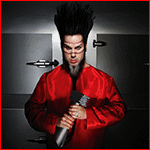|
 we all use keyboards. im typing on one right now, and heck, you probably will be soon. and, since were all older than little baby boys and girls who dont use keyboards other than the type without keys like on an ipad or iphone or ipad mini, we know how weird our keyboards can get. heck, ive even seen a keyboard with round keys. circle keys!! can u e ven imagine that  the keybvoard im on right now has flat keys, but hey, it doesnt have to. i could plug in a keyboard with concave keys, maybe even one with convex keys. who knows. there are all kinds of keyboards out there.  so thats why i made this thread. so we could appreciate all the diffetrent types of keys adorning our extremely useful technology. from big bulky keys, so lithe small sexy keys, to nonexistant ipad keys. please dont post about house keys, car keys, encryption keys, the florida keys or commander keyes from halo.
|
|
|
|

|
| # ? Jun 8, 2024 17:57 |
|
I like the keys on my mobile phone, my car keys, and Alicia Keys. All the other keys can kick rocks as far as I'm concerned.
|
|
|
|
i like the 4 key the most, it can be used for the good number 4, as well as $ which is the symbol for money in american and ¤, which is a cool box that is used a lot, especially in my favorite programming language c¤.
|
|
|
|
Switch terminology When discussing keyboard switches, it is useful to be aware of certain terminology commonly used to describe their functionality and properties. A term usually applied to high quality key switches. Sometimes formalized as a switching mechanism that makes use of some sort of metal spring, or a switch that actuates at some point during the middle of the switch's travel, these definitions are somewhat meaningless given the huge variation in quality across different switch designs that have these properties. [1] Traditionally, mechanical computer keyboards referred to the typewriter-based keyboards that were common on computer consoles in the 1950s and 1960s, where the process of determining which key had been pressed was almost entirely electromechanical. In the 1970s, these were replaced with "Electronic" keyboards, which were keyboards that used digital circuitry to determine which keys had been pressed. However, as rubber dome keyboards become ubiquitous in the 1990s, companies began to market their microswitch-based keyboards as having 'mechanical' switches. Force graph Capacitive buckling spring force graph showing actuation point, reset point, tactility point and hysteresis A force graph is a graph showing the distance of key travel on the y-axis (measured in millimetres or fractions of an inch) against the force required to depress the switch on the x-axis (measured in grams or centinewtons). The force graph shows the force being exerted at any given point in the switch travel, and is useful for evaluating certain properties of a switch design, such as the amount of tactility or the location of the actuation point in the travel. Key travel This is the distance between the keys resting position, and its position when its been pressed down fully. So-called "Full-travel keyboards" (such as standard rubber domes and most mechanical switch designs) have a travel of about 3.5–4 mm. Short travel keyboards, like laptop ones, have a travel of about 2–2.5 mm. Pretravel Some switch manufacturers use the term "pretravel" to refer to the actuation distance of a switch. Pretravel is typically around half travel. Overtravel "Overtravel" refers to the travel of the switch beyond the actuation point, up to full travel. Use of the overtravel region is not necessary, and the key can be released anywhere within this region. The total travel of a switch comprises the pretravel plus the overtravel. Actuation and reset points The actuation point in a keyboard switch is the point at which the contact mechanism registers a key press. Similarly, the reset point is when the mechanism ceases to register the key press. In some descriptions, the actuation point may be referred to as the "make" or "operating" point. The reset point may also be referred to as the "break" point. Hysteresis In many switch designs, the actuation and reset point do not occur at the same place in the key travel - commonly the reset point will occur higher up in travel than the actuation point did. The gap between these points is referred to as the hysteresis. The hysteresis of the Cherry MX Blue switch is quite pronounced due to its design, and this means it becomes harder to rapidly press a key multiple times in a row ('double tap'). This makes it less suitable for playing certain types of games. Bottoming out Bottoming out is when a switch is fully depressed. Some switch designs (particularly rubber dome designs) require the switch to be bottomed out in order to actuate. Other switch designs will actuate at some point during travel before the bottom is reached. Bottoming out is often considered undesirable due to it slowing down the typist, and generating noise when the keycap hits against the keyboard's internals (sometimes referred to as 'clack'). Some switch designs are easier to not bottom out on than others, with factors such as key stiffness, the location of the tactile point and the force at which the mechanism springs upwards being relevant factors. Switch characteristics Some terminology is used to describe the functions of the switch in regards to how the user experiences them. Any keyswitch with travel will fit into one of the following four categories. The last one being extremely uncommon. Tactile switch The most common type of switch - a tactile switch is a switch that has a 'bump' during travel. Usually the tactile point (i.e. the point at which the bump occurs) will occur around the point of actuation - in some designs it will occur exactly at the actuation point, but in many cases there isn't a perfect co-incidence. More formally, tactility is a sudden drop in the amount of force needed to push the switch further. On a force graph of a tactile switch, the point of tactility will appear as a sudden drop in force. In broad terms, tactility in switching mechanisms is implemented by either pressing down on something that gives way or collapses (rubber domes, buckling springs, beam springs) or by adding in something that obstructs the travel of an otherwise linear switch (e.g. Alps SKCM or Cherry MX). Most keyboards for desktop or laptop computers will have tactile switches. Linear switch A linear switch is a switch that gets progressively stiffer during key travel, and thus has no tactile 'bump'. A force graph of an ideal linear switch will show a straight line rise of force from the start to the end of travel, but in practise the rate of force increase may be change at different points of the travel. Linear switch designs are simple and reliable, and are common in specially-designed rugged keyboards. They were very common in the 1970s and early 1980s for terminal and PC keyboards, but have been eclipsed by the popularity of tactile switches since the mid to late 1980s. Clicky switch A clicky switch is a type of tactile switch that is specifically designed to make some sort of auditory feedback when the tactile actuation point is reached during key travel. Some clicky switches use a tactile mechanism that is inherently noisy when actuated (buckling spring, beam spring). Other switch families have variants that have been specially adapted to make a sound on actuation. For instance, in the clicky variations of the Alps SKCM series, a leaf spring hits against the walls of the switch housing creating a sound. In the Cherry MX Blue, the slider is divided into two parts, with the lower part being propelled against the switch bottom when the tactile bump has been overcome. Due to the fact that click mechanisms depend on the key travel overcoming some sort of obstruction, it is not possible to have a clicky linear switch. Some manufacturers attempted to get around this by using a beep speaker in the keyboard that makes a noise when the key is pressed. Clicky switches should not be confused with those that are noisy to type on, but are not designed specifically to make noise to coincide with the tactile point. A common source of extraneous noise occurs when the typist bottoms out hard on the switch, this is sometimes known as 'clack' to differentiate it from a 'click'. See also: Category:Clicky switches. Parabolic switch A parabolic switch is a type of switch that follows a parabolic weighting curve. After reaching the peak of the parabola, the force to continue pressing down on the switch will actually decrease. This gives a very unique and consistent keyfeel as the low grade parabolas will provide an almost constant amount of force to be applied throughout the throw of the key switch. The actuation point can be anywhere on the parabola, but is usually placed 55-60% of the travel from the key idle state. Unfortunately this is usually after the crest of the parabola, so it becomes extremely difficult to avoid bottoming out in comparison to a linear switch. Contact mechanism Main article: Contact mechanism A contact mechanism is the electrical mechanism in the switch used to register a key press by the keyboard's controller logic. Completely different switching mechanisms may use the same contact mechanisms – for example, rubber domes, Cherry MY switches and certain buckling spring implementations use a membrane contact mechanism despite the fact that these switches have otherwise completely different characteristics. Consequently terms such as "membrane keyboard" or "capacitive keyboard" are ambiguous, and should be avoided unless discussing the contact mechanism itself.
|
|
|
|
i mentiosed round keys in the OP, but i just found a picture of some. key aficinados, check out this weird biz: can u imagine urself using that? i sure can, because im an open minded keboard user. i am willing to use any keyboard, even ones that seem uncomfortable at first
|
|
|
|
Cherry M7 is a family of linear switches manufactured by Cherry. The switch went through at least two generations of external design, while most likely keeping the same internal mechanism. Cherry Switches & Keyboards catalogues from the early 1970s refer to these switches as 'Cherry low profile key switches with gold "crosspoint" contacts', with M6x part numbers, which are being tentatively called Cherry M6, even though Cherry did not have switch series numbers at that stage. By 1982, what amounts to the same product was being referred to as "Serie M7" with M7x part numbers, with no obvious change in the design or specifications. Cherry no longer have any records that would indicate what if anything did justify the change in part numbers, and there is no known way to distinguish between "M6" and M7 switches. The switch has many design variations, including different keycap mounts (tee, bar, and cross), upright and angled stem, multiple contact types, latching action, and various pole/throw combinations. Travel is 4±0.5 mm, with actuation at 2.4±0.8 mm. Actuation force for a basic switch is given as 71±15 cN in a Cherry specification (based on US to metric conversion), and 70±15 cN in a catalogue. Other variants of the switch used different actuation forces. The switch shell is sealed during manufacture. The specific process used is unknown; the switch simply cannot opened up without destroying it. In some cases, the base can be pulled clean off the switch, but otherwise, the only possible way to open the switch without excessive damage is to cut off the base with a knife. Even when the base is pulled off, there is nothing to hold the base back on, and it would need to be glued back together. The contemporary Futaba complicated linear switch sealed only the contact mechanism, but the switch required significantly more complexity to achieve this. The switch is only suitable for plate mounting. It would require rectangular holes. Parts The switch consists of 6 parts: Shell Slider Return spring Solid metal contact Contact leaf spring Base Small nubs on the base of the slider hold the return spring onto the slider; the spring can be pulled clear of these easily, and returned onto these nubs using tweezers. Operation "Wings" on either side of the slider holds the contact leaf away from the static contact. When the slider is depressed, the leaf spring is able to make contact with the static contact plate. Design First generation The design of the first generation of M7 was very similar if not identical to the preceding Cherry M6, based on Cherry Switches & Keyboards Catalog C-74 (showing the M6) and Cherry Keyboards and Switches Catalogue 1982 showing the M7. The Cherry branding is simply the word "CHERRY" in capitals; the logo was not moulded into the switch originally. Later generation(s) Later M7 switches gained a restyled shell with Cherry logo and flexible plate retention clips.[1] Keycap mounts  Cross mount The cap-mount is similar to MX but a bit different. It is not symmetric in both directions. One 'line' of the + is a bit longer and a bit thicker. However, the difference is so small, that it is possible to fit keycaps which where designed for MX switches. After the keycaps had been put on, the plastic around the switch mount of the keycaps appears to be a bit white around the longer and wider line of the cross. Hack value It is possible to drill a hole into the switch from bottom to top at the opposite side of the leaves, without destroying the switch. If precisely done, this could be used to mount the switch without the need of a separate plate. Gallery First generation Bar mount This switch is likely to be an M6; observe the atypical static contact shape, and that the base does not make provision for DPST contacts. The depicted switches were sourced from Electronic Surplus (SKU 2074) with no information about their age or origin known. 
|
|
|
|
The Futaba clicky switch is a medium stiff, tactile, clicky mechanical keyboard switch that was produced by Futaba. The provisional name is a misnomer, as there is evidence of an identical-looking linear version.[1]  The Futaba clicky switch (provisional name to differentiate it from their earlier linear switches) was a keyboard switch produced by the Japanese company Futaba. It was in many Korean keyboards, mainly by Sejin Electron. In the foreign market, the keyswitch was first sighted in a 1986 keyboard made by Datacomp in Taiwan. Many Japanese keyboards also made use of the Futaba keyswitch. The last keyboard known to be produced with Futaba switches was the Sejin Electron SKM-1040 left-handed full-size keyboard, which has been re-branded under many different names. Futaba switches are no longer in production. Details  Futaba switches are branded on the bottom. Confirmation of identity requires de-soldering the switch from the keyboard. The switch shell is held closed by melted pins; the switch would require glue to reassemble it once the pins have been destroyed. The switch has three legs, in an asymmetric arrangement relative to the branding, with two legs on the left (top-left and bottom-left) and one on the centre right. The top-left and right legs are connected together.[2] The same keycap mount and slider design was later used for the Sejin Futaba-mount dome switch, which used rubber domes over membrane. Variants  Futaba Cherry MX-mount variant Most Futaba clicky switches have an inverse cross mount, i.e. the cross is on the keycap, and the slot is in the slider. The keycap stem and the slider each have a two-stage mount, with a smaller cross followed by a larger cross. These switches have been found with white and cyan sliders. Sejin-made keyboards typically use this slider. There is also a much less common variant with a Cherry MX-compatible slider; these are found in several Chicony keyboards (including some KB-5161 and some KB-5181) and in some Focus keyboards. The keycap mount is not believed to be indicative of any difference in keyfeel. The slider colour does have significance, but the details of which are not well documented. Cyan and blue are reported to feel and sound different.[2] At least two keyboards have been found with a stiffer switch used for the space bar, with a dark grey slider[3][4] or an cyan slider[5]. Some linear switches have also been manufactured, and these are outwardly identical to a normal white slider switch.[1] The Sejin Electron SKM-1040 is confirmed to have the linear version of the switch. There may also be non-clicky tactile switches.[6] There is a latching lock variant of this switch, the Futaba lock. There is also what appears to be an older variant with a different slider. This variant is welded closed along the sides, and is found in the NEC PC-8801-KI. Keyfeel  The Futaba switch is a clicky and tactile switch. The keyfeel has high hysteresis, with the actuation click occurring around 2.5 mm into the approximately 4 mm travel, and the release click occurring at 1 mm from the home position. The switch is very smooth, with a gentle rise in force, and only a small decrease in force after actuation. The switch has been demonstrated to have a loud ringing sound on a variety of pitches, like a higher-pitched IBM Model F.[7] 
|
|
|
|
Judge Clayjar posted:i mentiosed round keys in the OP, but i just found a picture of some. key aficinados, check out this weird biz: I wouldn't use it, since I would be afraid of dropping my pills on the keyboard and then I wouldn't find them again.
|
|
|
|
The beam spring is the name commonly given to an IBM keyswitch mechanism which was formally referred to in some documents as the combination beam spring and fly spring or beam/fly spring interlock. It was used in almost all of the keyboards that IBM designed during the 1970s. The name refers to the beam (flat) spring in the switch that is arched upwards at rest, and subsequently inverted when pressed upon. The inversion of the spring provides the auditory feedback and tactility, as well as actuating the capacitive switching mechanism. The switch was patented in 1971 by IBM, with Richard Hunter Harris and Robert John Wolfram as the inventors. Unusually, no trace remains of the US patent, and it is possible that it was rejected. The patent was successfully filed elsewhere though (a link to the UK patent is included at the bottom of the page). It replaced IBM's adaptations of the Selectric typewriter to computer use. The first keyboard to use the beam spring switch was the IBM 3277 keyboard of 1971, the last was the IBM Displaywriter of 1980. It was phased out in favor of the buckling spring which had the advantages of being cheaper, simpler and less bulky than the beam spring. Design  The switch uses a capacitive contact mechanism on what IBM called a "Pad Card" – a two layer PCB covered with an insulating substrate. On the lower layer of the Pad Card, there is a contact for each key on the keyboard, all of which are attached to an oscillator. On the upper layer of the Pad Card, there are two contacts for each key, one of which sits above the lower layer's contact, and the second is beside it, and is attached to a sensor. At the bottom of the beam spring key module is a so-called 'fly plate' – a piece of conductive plastic which sits on top of the pad card over the two contacts on the upper layer. The oscillator drives a signal on this arrangement of conductive pads, and three capacitors are formed – one between the contact on the back of the Pad Card, and the one directly above it, one between the latter contact and the fly plate, and one between the fly plate and the other contact on the top layer, which in turn is connected to a sensor. The capacitance between the lower contact and the one above it remains constant, and is used as a baseline by the sensor. Front of the Pad Card, attached to backplate.  Back of the Pad Card  The underside of the upper half of a beam spring keyboard assembly, showing the flyplates and the switch modules. Attached to each end of the fly plate are two metal arms, each with a slot near the top (the so called 'fly spring'). A flat piece of metal with tabs on either end slots into the fly spring. The metal is tensed upwards into an arch between the two arms, consequently forming a beam spring. The midpoint of the beam spring is attached to a plunger, on the opposite end of this the keycap is attached. There is a separate coiled spring used to return the mechanism (and the keycap) to its rest position when the key is released. Pressing on the keycap depresses the plunger which in turn applies pressure onto the mid point of the beam spring, which flattens it. Eventually the beam spring inverts (from a dome shape to a 'u' shape) - this causes the tabs on the beam spring to push the two arms of the fly spring outwards, allowing the beam spring to pull the fly plate up. Once the fly plate is raised, the arms on the fly spring snap back into place, holding the fly plate in the raised position. Two studs inside the switch housing limit the upwards travel of the fly plate. The plunger has a rubber washer around it to absorb the force and cut down the noise of bottoming out. Key module (left) and fly plate (right)  Top view of key module. Note rubber damper under the keycap mount. Inside of key module, showing the beam spring itself. (Propped up by fly plate) As the distance has changed between the fly plate and the upper contacts, the capacitance has decreased. The sensor mechanism uses the change in capacitance to detect the movement of the fly plate, and when this occurs, the key press is registered. Releasing the key causes the plunger to raise itself to its default position, which in turn pulls up the beam spring upwards, reverting it back to its rest position (making another audible snap in the process) which lowers the fly plate back into its rest position. The capacitance returns to its baseline level, and the keyboards ceases registering the key as being pressed. The patent specifies that the switches had been shown to work after over 100 million key presses. The keyswitches were usually entirely covered over with a layer of insulating rubber (a 'contamination shield' in IBM terminology), and the keycap slotted on to the mechanism over the rubber. Maintenance issues  One should take care when removing the keycaps from a beam spring keyboard. The keycap's mounting slots are weak, and are prone to breakage, causing them to come loose from the switch's key stem. In some cases, the beam spring itself has been known to break. It is possible that this is a product of poor storage/heavy wear, as they are otherwise quite durable. Keycaps should preferably be removed with the aid of a keycap puller tool, pulling up slowly, and gently wiggling the keycap back and forth. It should not be pulled up straight, or wiggled from side to side. When the switch is removed from the keyboard, the fly plate can become detached quite easily. The picture gallery below details IBM's official procedure for reattaching it. However, whereas the manual recommends that the user reattach the two sides separately, it is somewhat easier to push the two sides of the beam spring so that they are caught between the two sides of the fly spring (but not attached), and then slowly pulling the fly plate down. The tension of the beam spring will usually cause its tabs to slide into the slots on the fly spring when they come into contact with each other. IBM offered replacement Beam Spring key modules to customers as an FRU (Field Replaceable Unit – i.e. a component that could be replaced without returning the item to IBM) and thus Beam Spring keyboards are possibly one of the few keyboards that were designed to allow individual keys to be replaced.
|
|
|
|
Judge Clayjar posted:i mentiosed round keys in the OP, but i just found a picture of some. key aficinados, check out this weird biz: That's pretty cool, if I had a computer I would probably get a keyboard like that so people could tell I'm not your average computer user.
|
|
|
|
lol if u have cmputer
|
|
|
|
keyboards are stale, the new poo poo is stenographs
|
|
|
|
qirex posted:keyboards are stale, the new poo poo is stenographs omg..... i didnt evcen thing of this as a keyboard. ur a freaking genius man
|
|
|
|
keyboards are an important part of the computing experience.
|
|
|
|

|
|
|
|
rotor posted:keyboards are an important part of the computing experience. they can be plz refer to the op
|
|
|
|
rotor posted:keyboards are an important part of the computing experience. this threads actually about keys, not keyboards, so imo the guy who posted the huge pictures of old keys and how keys are made is really cool and ur really misguided and should probably make ur own thread if u want to talk about keyboards, which are merely a house for keys, just like computer is a house for folders, or folder are a houses for documents.
|
|
|
|
oh I get it now. I don't know man keys are ok but I prefer keyboards. that's just the way I am and I make no apologies for it.
|
|
|
|
the caps lock key on my keyboard locks in the "down" position. it's a good key.
|
|
|
|
rotor posted:oh I get it now. I don't know man keys are ok but I prefer keyboards. that's just the way I am and I make no apologies for it. wow.....i dont think u do get it. have u ever heard someone say screen are ok but i prefer computer? fri ck off
|
|
|
|
I've heard that and much much more.
|
|
|
|
there were IMO the best keys the cs80 basically had two completely separate eight-note polyphonic synthesizers in one (see the top two rows), with its own separate envelope and filters (low AND high-pass!) each voice was a separate oscillator, so sixteen oscillators total a bitchin ribbon controller too that knew where you first touched and slid the notes based on that just like multitouch only in 1974 or so it weighs 220 pounds and someone sold this one for $18,000 last year
|
|
|
|

|
| # ? Jun 8, 2024 17:57 |
|
oh and they keys themselves were weighted (I think fully, maybe semi) and were velocity sensitive AND had after touch which I think was unheard of at the time
|
|
|















